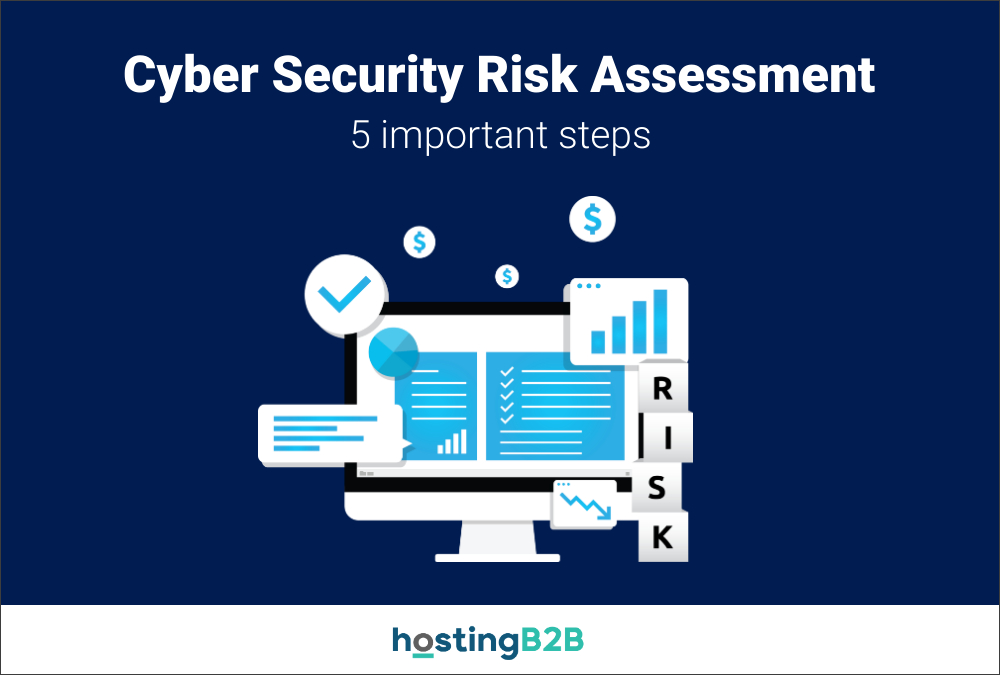5 Steps to A Cyber Security Risk Assessment

In todays technological world where all is unknown, there is no such thing as one-size-fits-all when it comes to cyber security. Every organization faces its own unique set of security risks, and due to that needs to create its own personal approach to cyber security risk assessment.
What a Cyber security risk assessments does, is it helps organizations understand, control, and mitigate all forms of cyber risk. It is a critical component of risk management strategy and data protection efforts.
It might sound simple but, cyber security risk assessments aren’t easy — and getting started can be the hardest part of your risk management strategy. We can help by taking you step by step through this process. Firstly let’s start with the most common questions.
What is cyber risk?
Cyber risk is the likelihood of a business experiencing negative disruptions to their sensitive data, finances, or business operations online. Most commonly, cyber risks have an association with events that result in a data breach.
Cyber risks are sometimes referred to as security threats.
Examples of cyber risks include:
- Ransomware
- Data leaks
- Phishing
- Malware
- Insider threats
- Cyber attacks
The Benefits of Performing a Security Risk Assessment:
- Reduce costs associated with security incidents
- Gain a baseline for organizational risk
- Avoid data breaches
- Compliance issues lessen
- No more lost productivity
- Less or NO data loss
Here are 5 Steps to Performing your Risk Assessment
1. Determine the scope of the risk assessment
A risk assessment starts by making the scope of the assessment loud and clear. Keep in mind the main types information that the organization handles of (e.g., Social Security numbers, payment card numbers, patient records, designs, human resources data), and prioritize them in a list of what needs to be protected.
2. Vulnerability and Threat Identification
Reflect on potential and relevant threats to the information systems and other threats sources that are made through accidental or intentional actions by hackers. Develop a list of vulnerabilities existing in the information system and network of the organization. Such task is performed through internal audits or vulnerability scanning. It is important to identify the weaknesses of your business in order to be able to prevent them in the long run and acoid any negative impact on information.
3. Set Security Controls
Analyze controls that are in place and which are not in order to minimize or eliminate the probability of a threat or vulnerability. Controls can be implemented through technical means, such as:
- hardware or software
- encryption
- intrusion detection mechanisms
- two-factor authentication
- automatic updates
Make sure to implement any controls that are not in place with you IT department. At HostingB2B we offer Security As A Service
4. Monitor and Review Effectiveness
As the internet hackers keep finding new and malicious ways to hack a business and to disrupt security controls, your organization needs to continuously adjust its security policies and maintain a risk management program that can stand ground to the hackers. The risk management program should be in constant monitoring state that will search the environment for new threats.
Additionally, your risk analysis needs to be flexible, too. For example, as part of the risk mitigation process, you need to think about your response mechanisms so that you can maintain a robust cybersecurity profile.
5. Integrate Cyber security Training and Awareness Into Your Culture
Cyber security shouldn’t only be the IT department’s responsibility. Modern companies need to understand that everyone is responsible of keeping on top of an organizations Cyber security program as even the slightest mistakes could get in the way of a smooth flow. Also, Measures should be taken to train and sensitize their workers on what it means to be secure online in a day where anyone and anything could be a hacker.
In your organization, consider having a cyber security awareness day.
To conclude, whether you are a small business or multinational enterprise information risk management is at the heart of cybersecurity. These processes help establish rules and guidelines that provide answers to how threats and vulnerabilities can cause financial and reputational damage to your business and how they are mitigated.
Ideally, as your security implementations improve and you react to the contents of your current assessment, your cybersecurity score should improve.
Why Hostingb2b Solutions ? Contact us TODAY to find out!
Here are some of the other services we provide here At HostingB2B:
Recommended Posts

The Importance of Regular Website Backups
July 18, 2024




